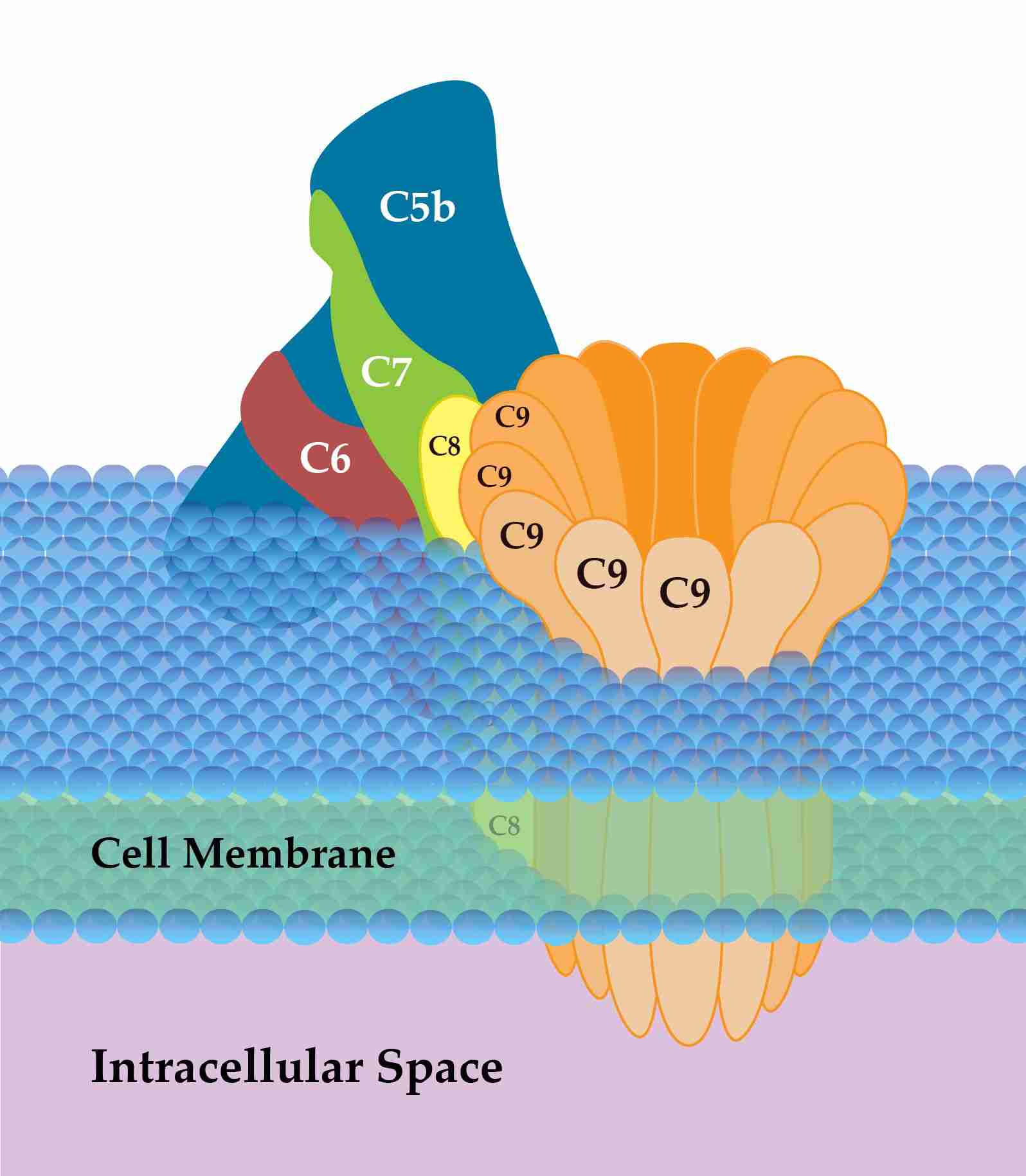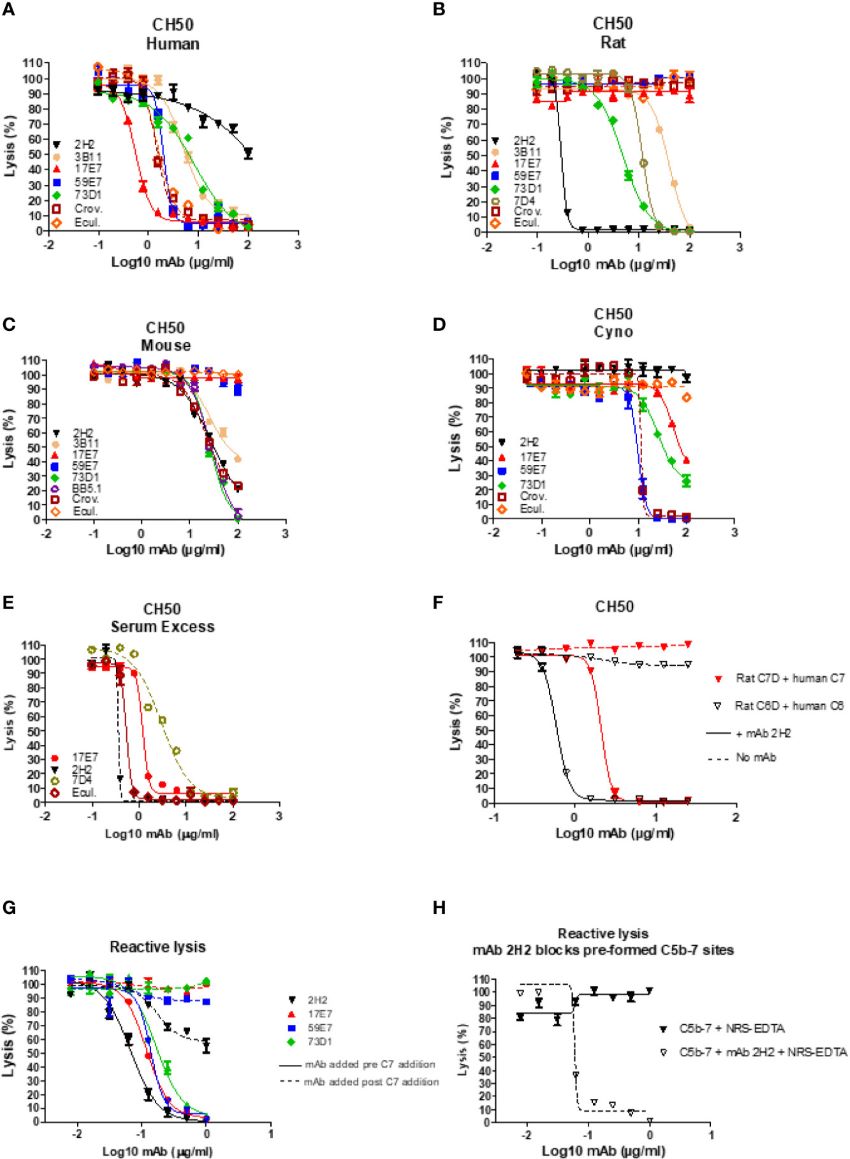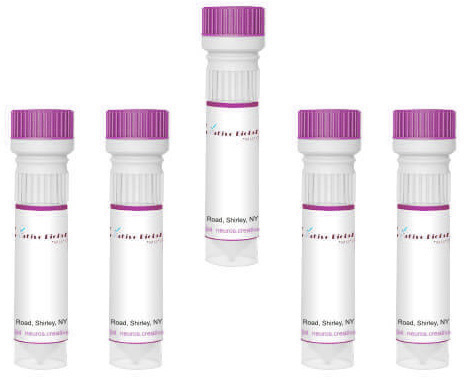Product List Background C7 Functional Service
Background
The complement system functions mainly depending on the formation of membrane attack complex (MAC) on the surface of pathogen cell membranes, leading to cell lysis and death. Similar to complement C5b and C6, complement C7 (C7) is the third essential constituent of the MAC. Human C7 is a single-chain elongated glycoprotein composed of 843 amino acids, containing nine domains (a MAC perforin domain and eight cysteine-rich modules). The concentration of C7 in normal human plasma is usually between 50-90 μg/mL, which is mainly synthesized by monocytes, not hepatocytes.
In the process of MAC formation, C7 binds to the C5b-6 complex, after which the C5bC6C7 (C5b-7) complex exposes the membrane-binding region and partially inserts into the bilipid layer of the target cell. C5b-7 can bind to a C8, allowing the complex to be more firmly inserted into the membrane. It has been reported that C7 could bind to endothelial cells and exert an anti-inflammatory effect, and potentially target plasmin activity to complement deposition sites by binding to plasminogen. C7 deficiency is associated with increased susceptibility to neisserial infections (such as meningococcal infections) and immunodeficiency due to a late component of complement deficiency.
 Fig.1 Diagram illustrating the pivotal role of C7 within the MAC. Distributed under CC BY-SA 3.0, from Wiki, without modification.
Fig.1 Diagram illustrating the pivotal role of C7 within the MAC. Distributed under CC BY-SA 3.0, from Wiki, without modification.
C7 Functional Service
Creative Biolabs offers a broad spectrum of products associated with C7, including anti-C7 antibodies, bespoke C7 ELISA kits, recombinant C7 protein, C7 blocking and immunizing peptides and vectors containing the C7 gene. These precisely crafted tools are pivotal in advancing research that aims to develop therapeutic strategies for a variety of diseases.
 Fig.2 Functional evaluations of monoclonal antibodies inhibiting C7.1
Fig.2 Functional evaluations of monoclonal antibodies inhibiting C7.1
Understanding the critical roles of complement in pathology has driven significant interest in complement-targeted therapies. For the wider application of anti-complement drugs in prevalent complement-mediated disorders, there is a pressing need for cost-effective and equally efficacious therapeutic options. Inquiries into novel monoclonal antibodies (mAbs) aimed at C7 and/or the C5b-7 complex have resulted in their development and identification through high-throughput functional assays, with specificity confirmed by immunochemical methods and surface plasmon resonance analysis. These mAbs were tested for pharmacokinetics and therapeutic efficacy in rodents. A mouse C7-specific mAb and a human C7-specific mAb inhibited serum lytic activity over 48 hours. The monoclonal antibody 2H2, directed against the C5b-7 complex, effectively inhibited serum lytic function in vivo for more than a week following a single low-dose administration, additionally safeguarding muscle endplates in a rat myasthenia model. Targeting C7 and intermediates offers an innovative therapeutic strategy, reducing both dosage and costs, thus broadening the scope of complement therapeutics.
Creative Biolabs delivers a suite of bespoke services focused on C7, including comprehensive interaction evaluations and additional functional capabilities. These precisely tailored offerings are designed to assist clients in advancing their distinguished scientific investigations and clinical endeavors.
Reference
-
Zelek, Wioleta M., and B. Paul Morgan. "Monoclonal antibodies capable of inhibiting complement downstream of C5 in multiple species." Frontiers in Immunology 11 (2020): 612402. Distributed under Open Access license CC BY 4.0, without modification.


 Datasheet
Datasheet Fig.1 Diagram illustrating the pivotal role of C7 within the MAC.
Fig.1 Diagram illustrating the pivotal role of C7 within the MAC.  Fig.2 Functional evaluations of monoclonal antibodies inhibiting C7.1
Fig.2 Functional evaluations of monoclonal antibodies inhibiting C7.1
